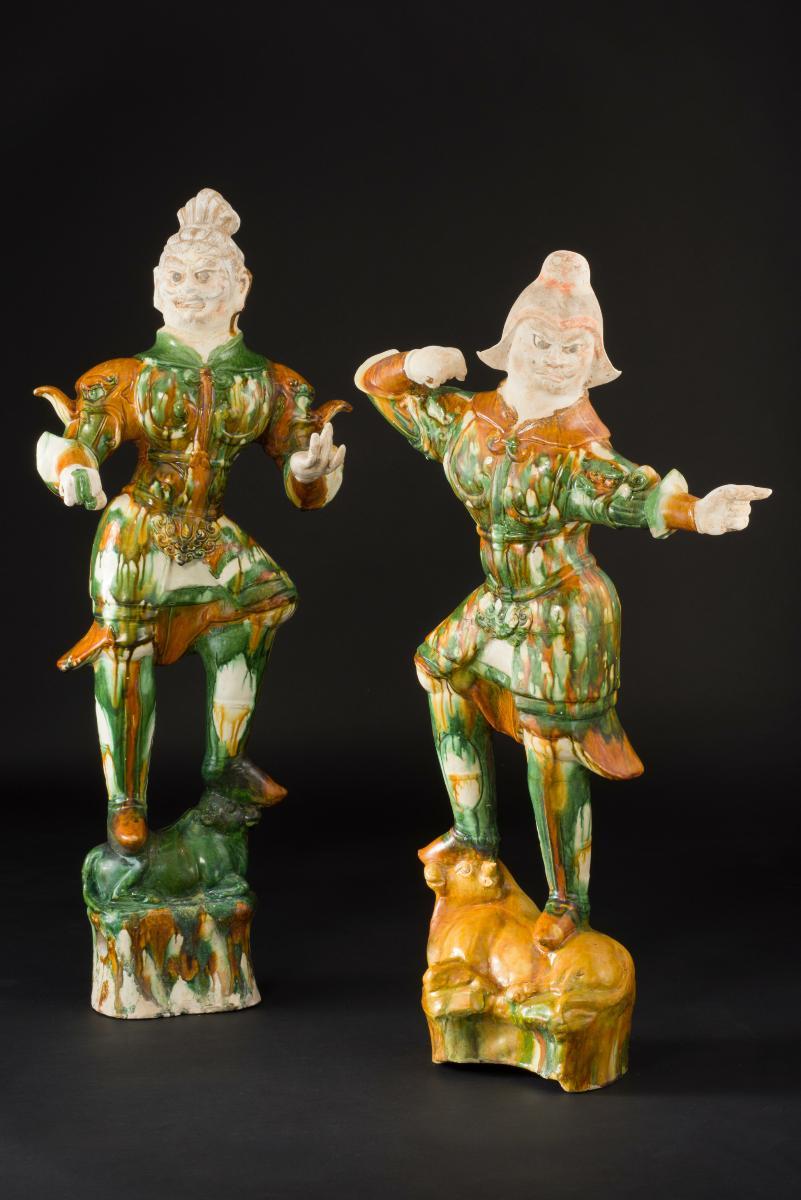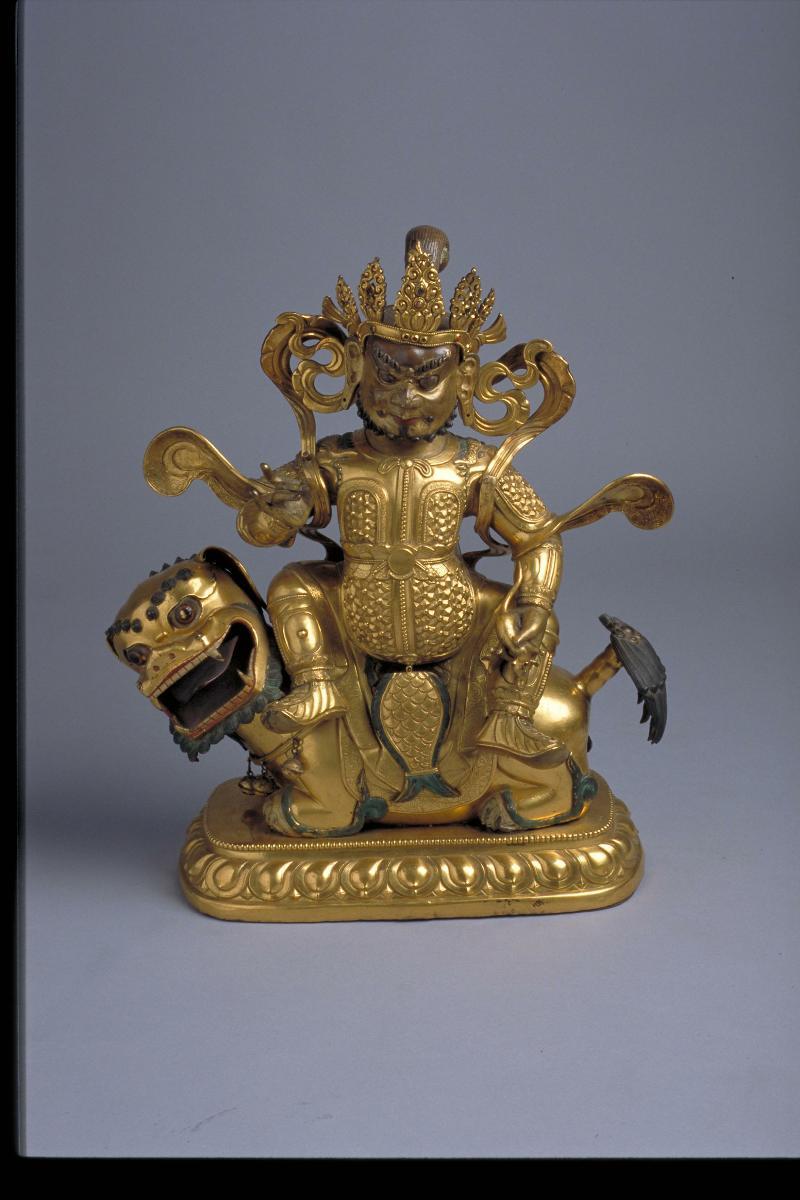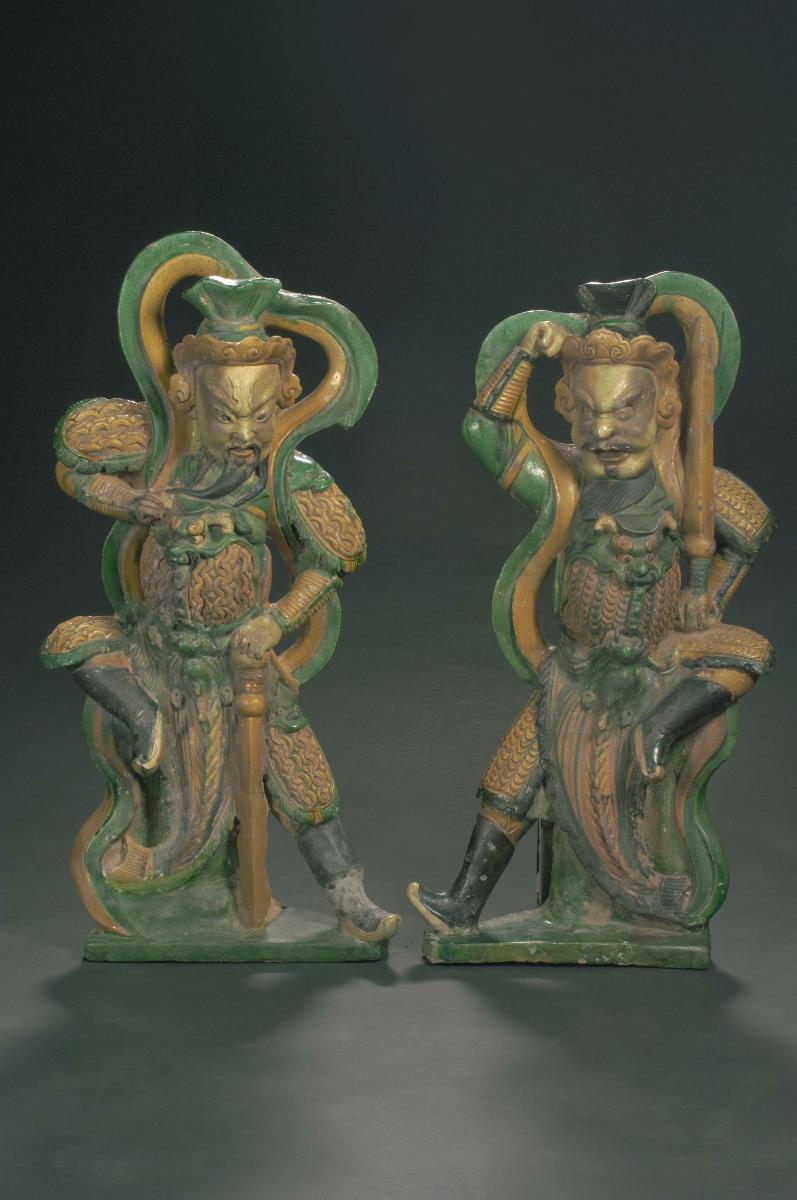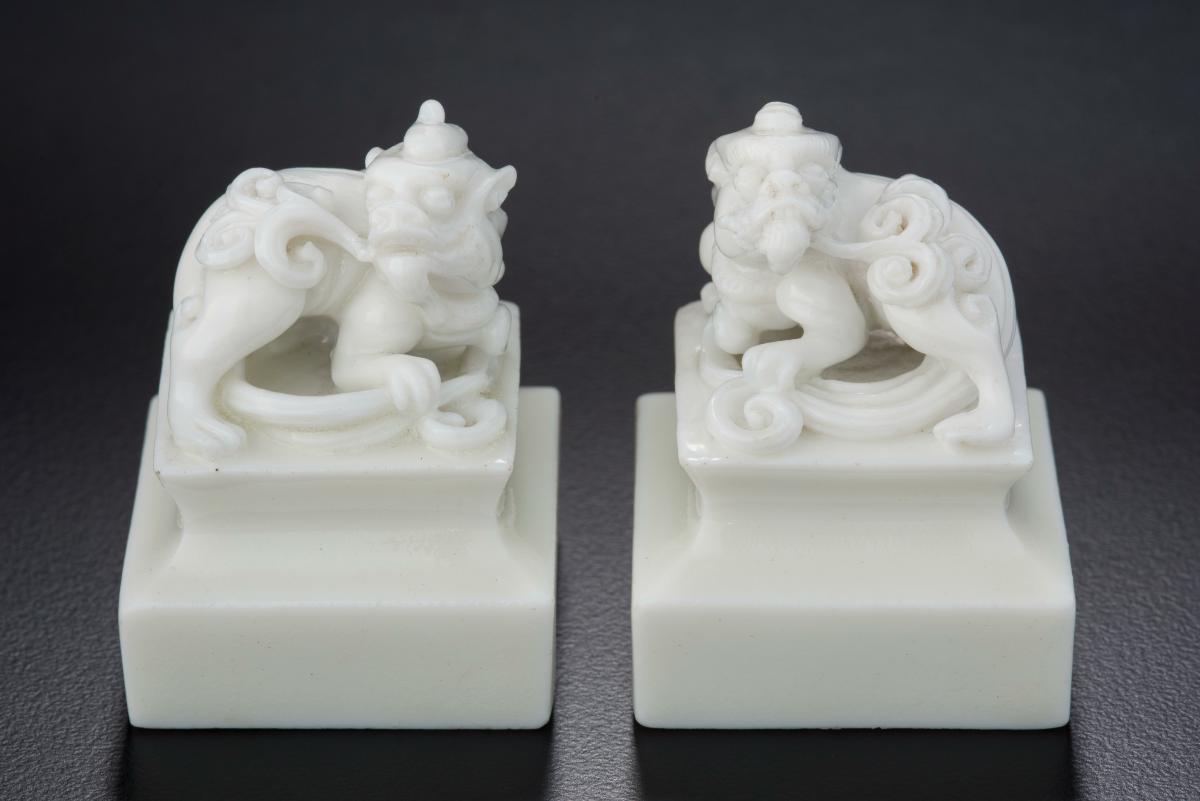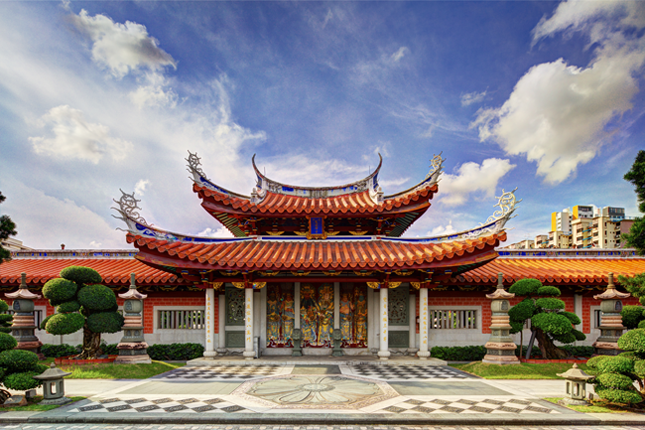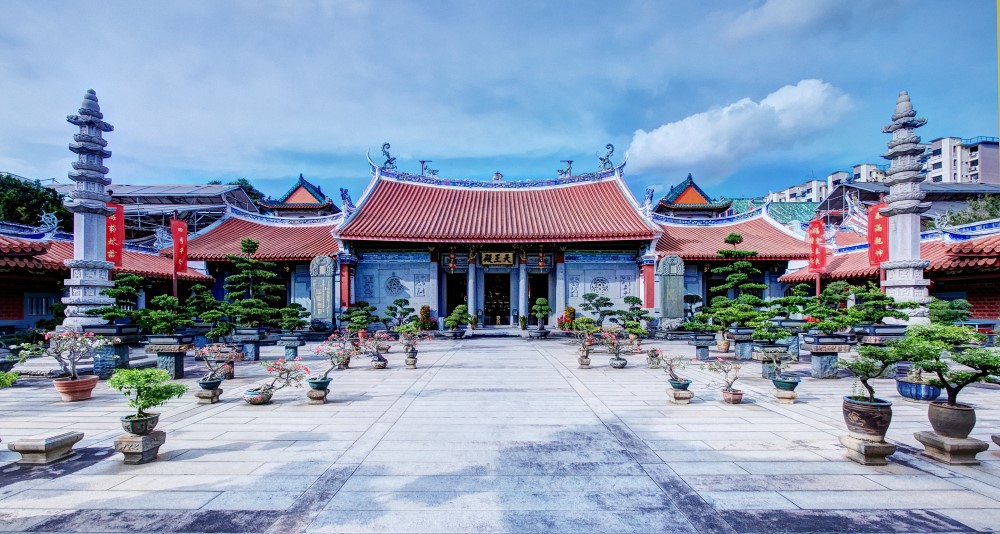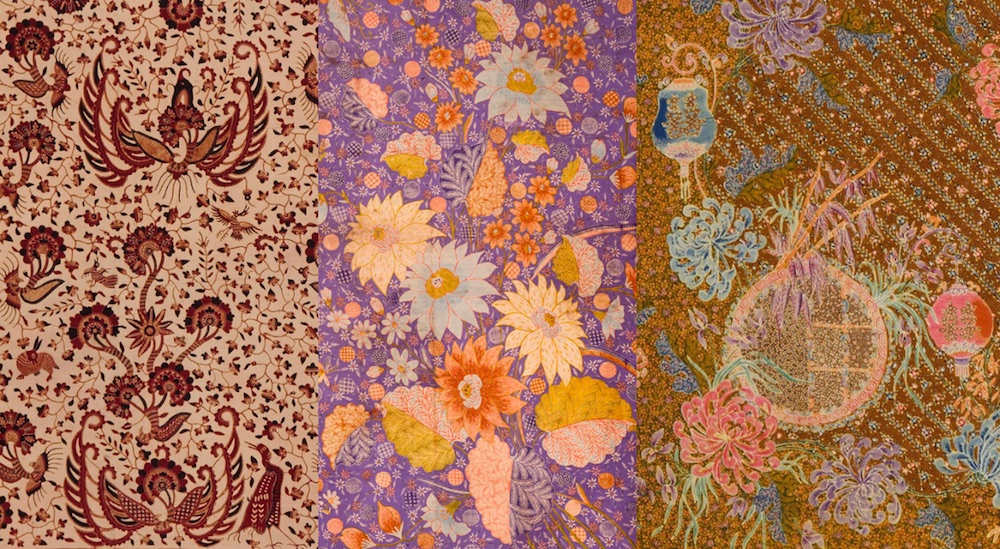These Buddhist lokapala also known as Heavenly Kings ('tianwang') were part of an elaborate retinue of burial figures. A three-coloured palette of cream, green and amber glazes known as Tang 'sancai', was used to decorate these figures. Clad in armour, each lokapala stands on one foot while the other tramples on a reclining bull representing ignorance. They would each have held wooden weapons in their hands, but these have decayed over the centuries. Without the weapons, these guardians still instill fear through their posture and the intense look in their eyes. These pieces are made from moulds and covered in lead glaze. During firing, colours in the glaze mingle with each other naturally to form vertical streaks. These streaks that drip like wax originate from the colouring oxides present in the glaze. Copper oxide forms greens while iron oxide gives brown and yellow. Mostly found in the tombs of nobility, their presence was to help avert evil. The custom of making 'mingqi' or burial wares was an ancient practice. It was believed these wares were necessary to the dead in the next world. Large retinues signified the high social status of the deceased.




